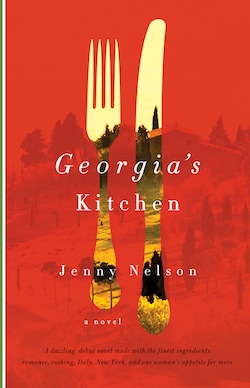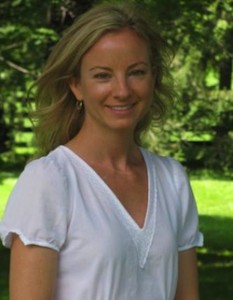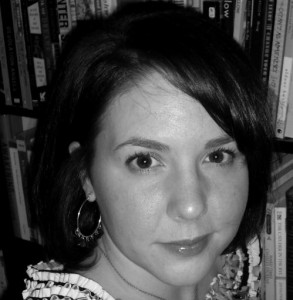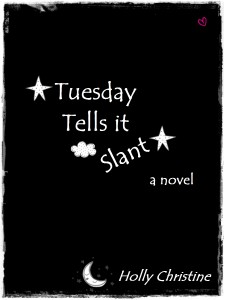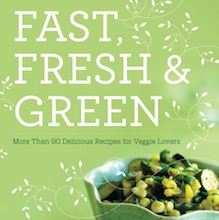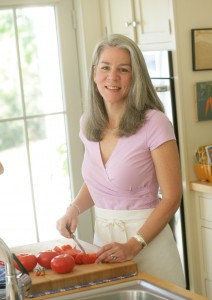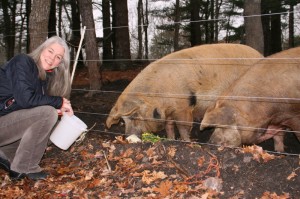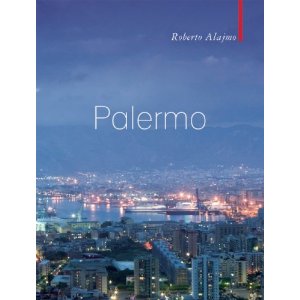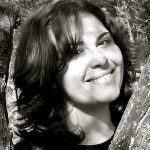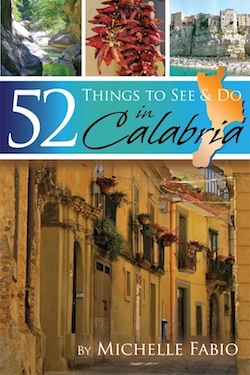Archive for the ‘books’ Category
Georgia’s Kitchen by Jenny Nelson
If you’re in the mood for an escape to Italy but your bank account doesn’t quite agree, have a look at Georgia’s Kitchen, a charming book that will transport you to a trattoria nestled in Tuscany’s rolling hills. You’ll also spend a good deal of time in bustling New York City, where Georgia lives full-time as a chef until her career takes a hit from a bad review and her romantic relationship crumbles. Off to Italy it is, then, for Georgia, where her passions become clear to her — and to a local named Gianni.
Georgia’s Kitchen is a fun, delicious read that just may inspire you to dig deeper and follow dreams simmering below the surface. Nelson’s writing is descriptive but tight — and foodies will love reading about Georgia’s exquisite creations, particularly as she strives to create the Tuscan trattoria’s signature dish. This book would be great to take on vacation or even just to cuddle up with for a little while each evening, savoring each chapter. Four espresso cups out of five!
And now, my interview with Jenny Nelson:
1. I know Bleeding Espresso readers are dying to know more about your Italian connection, so can you please share a little more about this?
Beyond being a complete and total Italia-phile – I love Italian food, wine, art, architecture, fashion, language, films and, of course, people – my mother-in-law’s entire extended family lives in Milan. My husband grew up making frequent trips to Italy and speaks Italian fairly well. We’ve traveled extensively throughout the country, particularly in the Tuscan region, where we were married. In Georgia’s Kitchen, there’s brief reference to the wedding of an American couple at the former villa of Dante Alighieri – that’s our wedding!
2. Georgia’s Kitchen is grounded in the inner workings of the restaurant industry, particularly in New York City. Do you have experience in it? If not, how did you go about researching this aspect of the book?
I’ve never worked in a professional kitchen but, fortunately, I have many friends who have. Even more fortunately, they were all too happy to share stories with me and to provide crucial details when interviewed. So when I needed to know “the Rolls Royce of espresso makers” I knew just who to ask.
3. Tuscany also plays a major role in your book, and I know from a previous interview you’ve spent a lot of time there. What are your favorite places to visit in Tuscany and favorite meals to have while you’re there?
I adore Florence and could spend hours walking just walking around that amazing city. I love the Pitti Palace, the Boboli Gardens, the Church of San Marco, Farmacia Santa Maria Novella (the ancient pharmacy), and Cibreo. In the countryside, I really like Lucca (a great way to see the city is on a bicycle) and Greve, but to be perfectly honest, I’ve yet to meet a Tuscan town I don’t love. As for food, my favorite Tuscan dishes are the simplest: pappa al pomodoro, panzanella, ribolitta, Tuscan beans.
4. I’m always curious to read about how other writers create their work; can you tell us about your writing process?
I generally don’t get going until the afternoon. In the mornings, I’m with my daughters and after I drop them at school I tend to have errands and other things that keep me busy (read: checking email). I write in an office on the third floor of my house and if I’m having a tough time I’ll break to walk my dog, or make a cup of tea – I drinks buckets of tea. If I’m really into a scene I’ll come back to it after my daughters go to sleep, but otherwise I sign off in the late afternoon or early evening only to return the next day. I also keep a notebook handy so that I can jot down phrases or ideas as they strike. If I’m working on a particularly sticky plot point, I go for a run. It seems that almost all of my “aha moments” (when I’ve successfully worked through a tricky issue) come while running.
5. Who or what inspires you as a novelist?
My daughters, stories in the newspaper, films, theater, other writers – the list is endless!
6. In the interview published at the end of Georgia’s Kitchen, you mention working on a new book about a woman whose husband is imprisoned for white-collar crime and who moves to the country — and ends up raising goats. As someone who raises goats (and writes about them at Goat Berries!), I just have to ask for a little more scoop on this book. How is it coming along? And do you have any interesting goat research stories to share?
This book, as they say, has been turned out to pasture. I love goats and I love goat cheese even more, but I’ve put this project aside for the time being. I’m working on something else now, but I’d rather wait until I’m a bit further along to talk about it. I will say that it explores some of the same themes as Georgia’s Kitchen: love, food, self-discovery, to name just a few.
Thanks so much Jenny!
I’m really looking forward to reading your next novel — even without a goat!
Jenny Nelson is a former web executive and consultant and past editor and producer at iVillage, Vogue.com and Style.com. She lives with her husband, twin daughters and dog in Millbrook, NY and Manhattan. You can find Jenny on her author website JennyNelsonAuthor.com, on Twitter @jennygnelson, and on Facebook with Georgia’s Kitchen.
*
Subscribe to my Book Reviews feed — book reviews ONLY, which aren’t published to the main feed — by visiting Feedburner.
7 Questions with Indie Chick Lit Author Holly Christine + Book Giveaway
Today I’m welcoming author Holly Christine (@hollyrambles) to Bleeding Espresso, and the first thing I must do is apologize; her interview was supposed to have been featured here a *long* time ago, but things kept coming up in my editorial calendar that pushed it back, and I’m truly sorry. But here we are finally, so without further ado…
Holly Christine is an indie author from Pittsburgh; her third book is called Tuesday Tells it Slant and is about a girl who goes back and changes her diary, thereby changing her life. Holly is self-published, and I thought her experiences with writing and self-publishing might interest some of my readers, so let’s get started! See the end of the post for contest details.
1. Tell us a bit about Tuesday Tells it Slant.
Tuesday Tells it Slant is about one girl, one diary and one past. At the age of 23, Tuesday decides that she is tired of her past. She wants to make it into something more desirable. To do this she uses her diary. She packs away her old diary entries and transforms a new past. She becomes enviable, skinny and popular. In doing this, she loses a bit of herself with each new entry. The books flows like puzzle pieces, each narrative, poem and diary entry fitting into the larger picture of Tuesday’s real identity.
2. Where did you get the idea?
The concept itself came about, alarmingly enough, during the drive into work. John Mayer’s Who Says was playing on the radio and I was intrigued by one part of the song: Who says I can’t be free/ from all of the things that I used to be/ Rewrite my history/ Who says I can’t be free? I was thinking of a way for a character to actually rewrite their history and a diary struck me. I have always kept a diary or journal of some sort and have fought the temptation to lie in an entry or two, trying to make up a day that I wanted instead of a day that I actually had.
3. Where did you get the title?
The title came up from an Emily Dickinson poem: Tell all the truth but tell it Slant/Success in Circuit lies. It seemed fitting for the concept of the story. During my senior year of college, I studied Dickinson for an entire semester. Each chapter is divided by a Dickinson poem that relates to memory, hope and fleeing from the past.
4. As a writer myself, this is the obligatory question: What is your writing process like?
It’s disturbing. My office becomes a sort of campground; filled with ashes, post it notes and gigantic pieces of paper, all taped together to allow me to fill in the plot holes as I go along. I sit for hours, but never begin before the voice of the narrative hits my head. From there, the muse takes hold of my brain and I don’t stop until the voice stops. She’s very demanding of my time. I also write in silence, but many of my characters’ traits are inspired by music.
5. Why did you choose to self-publish?
With Tuesday Tells it Slant, I never questioned whether to self-publish or not. After I finished cleaning up the prose and editing, I almost immediately made the story available for Kindle. I wanted to know what readers thought of the tale and because it did well with Kindle sales, I made it available in paperback. Self-publishing opens many doors. It isn’t a dead end street. Major publishers later picked up many self-published authors who made their works available for Kindle: Boyd Morrison and John Rector to name two.
6. What or who inspires you as a writer?
I’m inspired by relationships and oddities. I always find mannerisms interesting and often become inspired to write when I am around crowds. It’s very interesting to sit back and observe. I’m also inspired when I’m around other writers or chatting about the writing process.
7. Do you have any advice for aspiring novelists?
I think that many will agree that in order to advance your writing skills, you have to be a comprehensive reader. I also believe in writing every day, even if it’s a bit about what happened during the day that made you happy or angry or something that someone said that stuck with you. It’s like recording life. When you think about it that way, you will develop an arsenal of writing material.
BOOK GIVEAWAY:
Holly has offered to give away a copy of Tuesday Tells It Slant to one lucky Bleeding Espresso reader. Just comment on this post to be eligible; follow @hollyrambles on Twitter and leave me another comment here telling me you’ve done so for an extra entry. The contest is open only to those with U.S. shipping addresses and ends on Sunday, October 17 at 11:59 p.m. CET.
Good luck!
Fast, Fresh & Green by Susie Middleton
Today I’m so pleased to welcome Susie Middleton, author of Fast, Fresh & Green: More than 90 Recipes for Veggie Lovers.
As you all know, I’m a huge fan of starting a garden, supporting local farmers, and/or joining a community garden, so Susie’s book has been a great find for me — I actually stumbled upon Susie’s blog, Six Burner Sue, because she had mentioned baby goats. How fortuitous!
Susie sent me a copy of her book, and I fell in love immediately. More than just recipes, Fast, Fresh & Green really breaks down the basics of how you can handle all different kinds of vegetables, including ones you may have been scared to use in the past. There is so much great information and many wonderful recipes, but the photos alone in this book would be worth the price of admission. It’s absolutely gorgeous. Trust me, you *need* this handy reference book for veggies on your shelf.
I also love where Susie is coming from with her info; she’s not a vegetarian or a “nutrition nut” as she puts it, but she does “think it would be better for the planet and our well-being if we ate a little less meat and a few more vegetables.” Exactly!
As for Susie’s background, she was an editor at Fine Cooking magazine for many years and still contributes there. In addition to keeping her own blog, Susie also now writes at the Huffington Post Green Page; Fast, Fresh & Green is her first cookbook, which you can also “like” on Facebook. All photos courtesy of Susie’s website, SixBurnerSue.com.
1. How would you describe your book in just a few sentences?
My book, Fast, Fresh & Green, masquerades as a recipe collection—more than 90 delicious vegetable side dishes—but in reality, it’s a primer on how to cook vegetables, organized by 9 great techniques that will expand your repertoire and let you cook (and eat) an amazing variety of vegetable side dishes.
2. What inspired you to write this book?
When I was editor of Fine Cooking magazine, I discovered that people really wanted to eat and cook with more vegetables—our vegetable side dish features were some of our most popular stories—but that they often only knew one or two ways to cook them, or were worried about making dishes that didn’t appeal to everyone at the table. (Cooks often have adventurous palettes, but just as often, they also have to cook for people who have more conservative tastes, or don’t think they like things like vegetables.)
While there are plenty of vegetarian cookbooks on the market, I knew I wanted my first cookbook to be for everyone—a way to make the dinner plate more exciting for all kinds of eaters and a way for everyone to learn a few more ways to cook vegetables. So I decided to organize my book by technique, and to keep the flavor boosters interesting but not too exotic.
3. As a writer myself, I’m always curious to know about a writer’s process. What is yours like?
I was a writer before I was a cook—though very possibly I was born both, as I’ve always loved words and food. I come from a food- and cooking-obsessed family (I watched 4 of them argue about the best way to grill hot dog buns the other day), so the cooking thing was probably inevitable.
But I still love to write more than just about anything. I had some really good creative writing classes in both high school and college, and I was taught to write like I talk. So that’s what I do. I sit down and have a conversation with myself or an imaginary audience. Then, my years of being an editor (the other side of my brain) kickstart the editing process and I go back and revise.
Actually, I am pretty much constantly revising—especially lead paragraphs. One of the nicest things my publisher, Chronicle Books, let me do in Fast, Fresh & Green, is talk. Because the teacher in me got to speak—to give lots of tips and opinions. And one thing I feel strongly about is giving valuable information to readers. It’s fine to indulge a bit in the writing process, but I always remember to make sure I’m giving away at least one or two good tidbits of helpful information.
4. Did you have a particular readership in mind when you were writing the book? Did that change/expand as you wrote?
As I alluded to above, I didn’t write the book for long-time experienced cooks (although many are enjoying it!) but for the folks who are just getting excited about being in the kitchen and the folks who cook but really want more vegetable dishes in their repertoire, just to eat a few more delicious vegetables every day. (See my HuffPo post on this subject.)
I am really excited that I’m reaching these cooks, and I had a great email the other day from someone who said Fast, Fresh & Green had changed her eating habits and her dinner plate—that she thinks about the vegetables on the plate first now, instead of the meat.
5. What’s up next for you regarding work projects? And more specifically, are there goats in your future?
Next up: Two new book proposals are in the works, but I’m afraid I can’t reveal details about them just yet. I want to keep strengthening my blog, SixBurnerSue.com, which is new this year. And I want to continue working out how growing vegetables will be a part of my cooking/writing/growing equation. My first market garden is thriving this summer, but the time/money equation is a tough one. If I decide not to grow to sell in the future, I will at least be committed to growing a much bigger percentage of my own food than I have in the past.
I still write regularly for Fine Cooking and other magazines, and absolutely love my life on Martha’s Vineyard, where I am surrounded by farms and food. Nothing better! No goats just yet…but you never know!
Thanks so much, Susie!
What is your favorite vegetable and/or veggie dish?
What veggie would you like to prepare but haven’t yet?
*
Subscribe to my Book Reviews feed — book reviews ONLY, which aren’t published to the main feed — by visiting Feedburner.
100 Places in Italy Every Woman Should Go by Susan Van Allen
 Remember when Susan Van Allen was here a while back telling us why women love Italy so much? Well today it’s my turn to tell you a little more about her book, 100 Places in Italy Every Woman Should Go.
Remember when Susan Van Allen was here a while back telling us why women love Italy so much? Well today it’s my turn to tell you a little more about her book, 100 Places in Italy Every Woman Should Go.
Susan has just released an UPDATED version of the 2009 edition; additions include a map, budget tips, and online resources, where Bleeding Espresso is included. Woohoo! Grazie, Susan!
100 Places in Italy Every Woman Should Go would be a true treasure in your library, virtual library, or even in your life via iPhone app.
Whether you want to find a cooking course, spa, religious retreat, great beach, or just some fabulous shopping, Susan has it covered –in every corner of the Bel Paese. When I first received this book, I thought it would be something I’d flip through every now and again when the mood struck; instead I found myself reading chapters straight through, imagining myself visiting all of the wonderful places Susan describes so well.
The tone is friendly and the advice sincere, so you really do feel like you have a knowledgeable girlfriend by your side with the inside scoop on where you should go on your next Italian vacation. I probably don’t need to tell you this book would make a *fabulous* gift for your favorite Italophile who also happens to be a lady, either.
*
What’s a place in Italy you feel is appealing to females?
*
For more from Susan on 100 Places, be sure to check out her interview on the Eye on Italy podcast, which I co-host.
Subscribe to my Book Reviews feed — book reviews ONLY, which aren’t published to the main feed — by visiting Feedburner.
Palermo by Roberto Alajmo
 If you’ve been to Palermo in Sicily, you probably either loved or hated it. My love for the city is no secret. Palermo is not a place that throws open her arms to you; she makes you work for it, makes you discover her charm one ridiculously busy street at a time — and I tend to like that in cities. See also: Philadelphia.
If you’ve been to Palermo in Sicily, you probably either loved or hated it. My love for the city is no secret. Palermo is not a place that throws open her arms to you; she makes you work for it, makes you discover her charm one ridiculously busy street at a time — and I tend to like that in cities. See also: Philadelphia.
I’ve written a series of posts about some of my favorite popular stops in Palermo including the Duomo, Fountain of Shame, Antica Focacceria San Francesco, and the Capuchin Catacombs, so when I got an offer to review Roberto Alajmo’s new book Palermo from Haus Publishing, I jumped at the chance. The fact that it fits in perfectly with the Gita Italiana 2010 is like icing on the cannoli. Or something like that.
Roberto Alajmo is a native of Palermo; this book is translated into English by Guido Waldman. When I received it, the first thought in my mind was whether this was going to be a love letter to the gritty Sicilian città probably known best for the Mafia and its pastries — and I’d say yes. Yes it is, but it’s a palermitano love letter, if you will.
Now let me explain.
Alajmo speaks directly to a first-time visitor to his city from the first sentence: “You have to get yourself a window-seat and arrive on a clear sunny day.” This sets the tone of the entire book as he educates the reader about the city’s sights, but not just tourist attractions. Much of the book is a tongue-in-cheek look at the city and its natives with caustic, wry observations about illegal structures, Palermitano mentality about corruption, rubbish, politics, and so much more.
I found myself smirking through most of Palermo (and underlining an overwhelming portion of the book) because Alajmo’s analysis is so keen, his criticism subtle and yet full of daggers. He leaves you with many thought-provoking ideas such as the real reason why the South has so many unfinished buildings: “an unconscious sense that total completion carries with it an inbuilt sorrow.” It’s just a brilliantly written book.
So where’s the love?
Remember, Alajmo is a native of the city. He knows it. He appreciates its beauty, but he really delves into its problems — *big* problems in many instances — and the latter is what nearly all of this book is about. But in order to truly love someone (or in this case, something), don’t you have to recognize the faults and decide to love anyway?
So, yes, I would characterize Alajmo’s Palermo as a love letter to his city — a whopping, entertaining dose of tough love, but would a Palermitano have it any other way? I just loved it. Five very full espresso cups out of five.
Aside from content, by the way, this is simply a snazzy little book. It’s hardcover and measures 15.6 x 11.6 cm (about 6 x 5 inches); perfect for stuffing in your bag on a trip and a great gift item as well.
Have you been to Palermo? Would you like to go?
*
Subscribe to my Book Reviews feed — book reviews ONLY, which aren’t published to the main feed — by visiting Feedburner.

